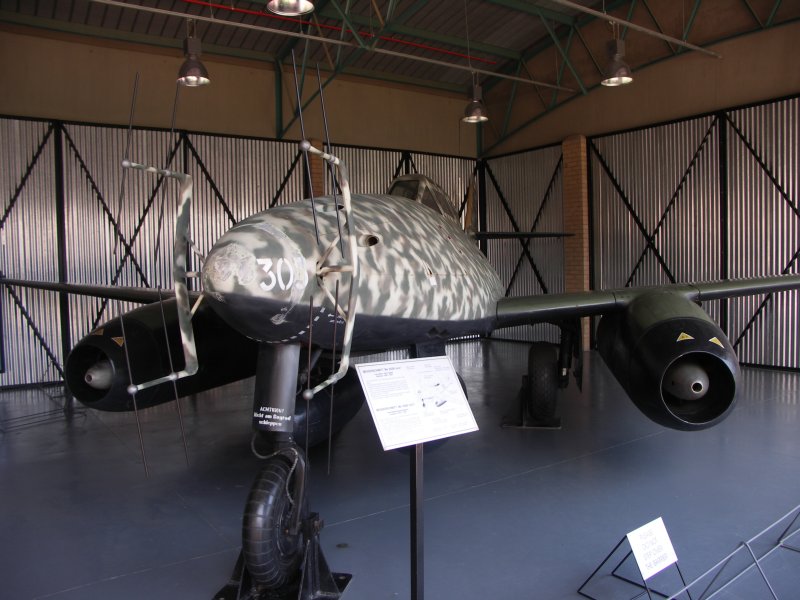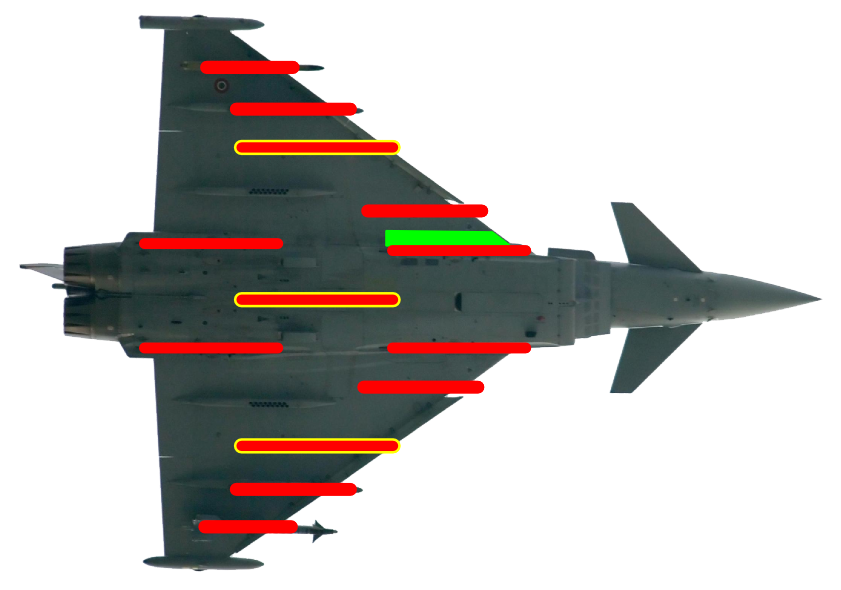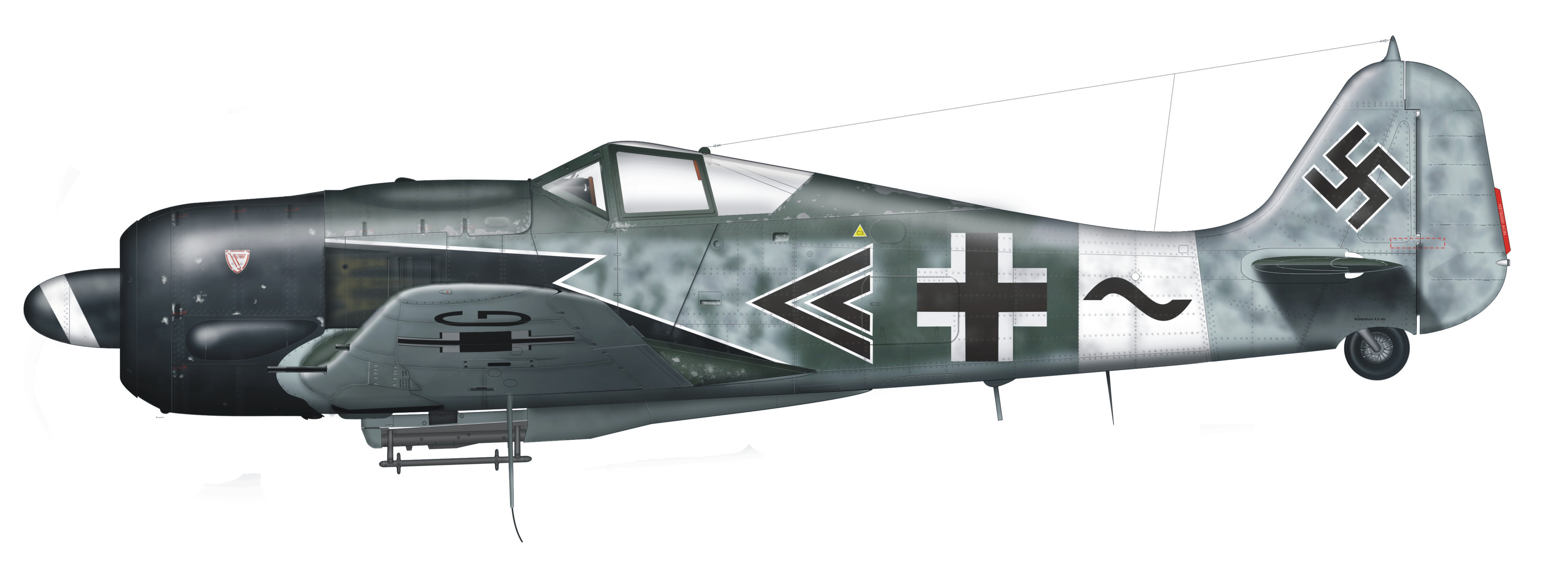|
Nachtjagdgeschwader 11
''Nachtjagdgeschwader'' 11 (NJG 11) was a Luftwaffe night fighter-Wing (air force unit), wing of World War II. NJG 11 was formed on 20 August 1944 with one ''Gruppe'' (group) consisting of 2 ''Staffeln''. Formation ''1 staffel'' was formed from elements of 6./JG 300 and in January 1945 redesignated 7./NJG 11. ''2 staffel'' and'' 3 staffel'' formed from 1./NJGr 10 and in January 1945 redesignated 1./NJG 11 and 8./NJG 11 respectively. II./NJG 11 was formed in November 1944 from 10./JG 300. III./NJG 11 was formed in January 1945 and in March 1945 redesignated 2. NJG 11. 10. ''Staffel'' was formed on 28 January 1945 at Burg-Magdeburg from Erprobungskommando#Kommando Welter, ''Sonderkommando Welter'' flying Messerschmitt Me 262 jet fighters. NJG 11 was the Luftwaffe's only Nachtjagdgeschwader to exclusively fly single-engine, single-seat fighter aircraft in the Wilde Sau role. (excepting ''10'' ''staffel''). During its existence the gruppen operated independently of each other ... [...More Info...] [...Related Items...] OR: [Wikipedia] [Google] [Baidu] |
Luftwaffe
The Luftwaffe () was the aerial warfare, aerial-warfare branch of the before and during World War II. German Empire, Germany's military air arms during World War I, the of the Imperial German Army, Imperial Army and the of the Imperial German Navy, Imperial Navy, had been disbanded in May 1920 in accordance with the terms of the 1919 Treaty of Versailles, which banned Germany from having any air force. During the interwar period, German pilots were trained secretly in violation of the treaty at Lipetsk (air base), Lipetsk Air Base in the Soviet Union. With the rise of the Nazi Party and the repudiation of the Versailles Treaty, the Luftwaffe's existence was publicly acknowledged and officially established on 26 February 1935, just over two weeks before open defiance of the Versailles Treaty through German rearmament and conscription would be announced on 16 March. The Condor Legion, a Luftwaffe detachment sent to aid Nationalist faction (Spanish Civil War), Nationalist for ... [...More Info...] [...Related Items...] OR: [Wikipedia] [Google] [Baidu] |
Nachtjagdgeschwader 5
''Nachtjagdgeschwader'' 5 (NJG 5) was a Luftwaffe night fighter-wing of World War II. NJG 5 was formed on 30 September 1942 in Döberitz. Operational history On 1 October 1942, 3./NJG 1 was redesignated 1./NJG 5. In March and April 1943, General Josef Kammhuber ordered IV./NJG 5 to Rennes, France to protect the German U-boat bases. The group was relocated to the Eastern Front again and redesignated as I./ ''Nachtjagdgeschwader'' 100 (I./NJG 100). Western Front ''Oberleutnant'' Walter Borchers was made '' Gruppenkommandeur'' of III./NJG 5 on 22 April 1943, leading the ''Gruppe'' until March 1944. On the night of 27/28 April, Wilhelm Johnen in a Messerschmitt Bf 110 G-4 performed an emergency landing at the Swiss airfield at Zürich-Dubendorf. Johnen and his crew were interned, and the Luftwaffe employed extensive political manoeuvring to ensure the Bf 110, equipped with the still secret SN-2 radar, was kept from close Allied examination and returned intact. At the end ... [...More Info...] [...Related Items...] OR: [Wikipedia] [Google] [Baidu] |
Luftwaffe Wings
The Luftwaffe () was the aerial-warfare branch of the before and during World War II. Germany's military air arms during World War I, the of the Imperial Army and the of the Imperial Navy, had been disbanded in May 1920 in accordance with the terms of the 1919 Treaty of Versailles, which banned Germany from having any air force. During the interwar period, German pilots were trained secretly in violation of the treaty at Lipetsk Air Base in the Soviet Union. With the rise of the Nazi Party and the repudiation of the Versailles Treaty, the Luftwaffe's existence was publicly acknowledged and officially established on 26 February 1935, just over two weeks before open defiance of the Versailles Treaty through German rearmament and conscription would be announced on 16 March. The Condor Legion, a Luftwaffe detachment sent to aid Nationalist forces in the Spanish Civil War, provided the force with a valuable testing ground for new tactics and aircraft. Partially as a result ... [...More Info...] [...Related Items...] OR: [Wikipedia] [Google] [Baidu] |
Krefeld
Krefeld ( , ; ), also spelled Crefeld until 1925 (though the spelling was still being used in British papers throughout the Second World War), is a city in North Rhine-Westphalia, in western Germany. It is located northwest of Düsseldorf, its center lying just a few kilometers to the west of the river Rhine; the borough of Uerdingen is situated directly on the Rhine. Because of its economic past, Krefeld is often referred to as the "Velvet and Silk City". It is accessed by the autobahns A57 (Cologne– Nijmegen) and A44 (Aachen–Düsseldorf– Dortmund– Kassel). Krefeld's residents now speak ', or standard German, but the native dialect is a Low Franconian variety, sometimes locally called ', ', or sometimes simply '. The Uerdingen line isogloss, separating general dialectical areas in Germany and neighboring Germanic-speaking countries, runs through and is named after Krefeld's Uerdingen district, originally an independent municipality. History Early history left, up ... [...More Info...] [...Related Items...] OR: [Wikipedia] [Google] [Baidu] |
Karl-Heinz Becker (pilot)
Karl-Heinz Becker (30 December 1918 – 20 April 2006) was a Luftwaffe flying ace. He is credited with seven aerial victories flying the Messerschmitt Me 262 jet fighter, making him one of only 28 jet aces of World War II.For a list of Luftwaffe Jet aces see ''List of German World War II jet aces'' Becker and his radio operator claimed six de Havilland Mosquitos in two weeks, two within three minutes of each other on the night of 23 March 1945. Career Becker was born on 30 December 1918 and joined the military service of the Luftwaffe in 1938. In 1939, he attended the '' Kriegsschule'' (war academy) in Potsdam. Following flight training, Becker served as a flight instructor with the ''Flugzeugführerschule'' A/B 121 (FFS A/B 121—flight school for the pilot license) in Straubing. On 15 December 1944, he received a call from ''Oberleutnant'' Kurt Welter asking him to join ''Sonderkommando Welter''. This unit was subordinated to II. '' Gruppe'' (2nd group) of ''Nachtjagdgeschwa ... [...More Info...] [...Related Items...] OR: [Wikipedia] [Google] [Baidu] |
Feldwebel
'' '' (Fw or F, ) is a non-commissioned officer (NCO) rank in several countries. The rank originated in Germany, and is also used in Switzerland, Finland, Sweden, and Estonia. The rank has also been used in Russia, Austria-Hungary, occupied Serbia and Bulgaria. ' is a contraction of meaning 'field' and , an archaic word meaning 'usher'. comes from the Old High German , meaning to go back and forth (as in 'wobble'). There are variations on , such as '' Oberstabsfeldwebel'' ('Superior Staff Field Usher'), which is the highest non-commissioned rank in the German army and air force. in different languages The rank is used in several countries: , , , and . In Swiss German the spelling is used. in different countries and armed forces Austria ' was a typical infantry rank of the k.u.k. Austro-Hungarian Army (1867–1918). It might have been comparable to NCO-rank OR8.The abbreviation "OR" stands for ''"Other Ranks / fr: sous-officiers et militaires du rang / ru:друг� ... [...More Info...] [...Related Items...] OR: [Wikipedia] [Google] [Baidu] |
Hardpoint
A hardpoint is an attachment location on a structural frame designed to transfer force and carry an external or internal structural load, load. The term is usually used to refer to the mounting points (more formally known as a weapon station or station) on the airframe of military aircraft that carry list of aircraft weapons, weapons (e.g. gun pods and rocket pods), aircraft ordnance, ordnances (aerial bomb, bombs and guided missile, missiles) and support equipment (e.g. flare (countermeasure), flares and electronic countermeasure, countermeasures, targeting pods or drop tanks), and also include hardpoints (also known as pylons) on the wings or fuselage of a military transport aircraft, commercial airliner or private jet where external turbofan jet engines are often mounted. Aircraft In aeronautics, the term ''station'' is used to refer to a point of carriage on the frame of an aircraft. A station is usually rated to carry a certain amount of payload. It is a design number whi ... [...More Info...] [...Related Items...] OR: [Wikipedia] [Google] [Baidu] |
Kurt Welter
Kurt Welter (25 February 1916 – 7 March 1949) was a German Luftwaffe fighter ace and the most successful ''Jet Expert'' of World War II.For a list of Luftwaffe jet aces see ''List of German World War II jet aces'' A flying ace or fighter ace is a military aviation, military aviator credited with shooting down five or more enemy aircraft during aerial combat. He claimed a total of 63 aerial victories—that is, 63 aerial combat encounters resulting in the destruction of the enemy aircraft—achieved in 93 combat missions. He recorded 56 victories at night, including 33 De Havilland Mosquito, Mosquitos, and scored more aerial victories from a jet fighter aircraft than anyone else in World War II and possibly in aviation history. However this score is a matter of controversy; research of Royal Air Force losses suggests Welter Confirmation and overclaiming of aerial victories during World War II, overclaimed Mosquito victories considerably. Against this, Luftwaffe claims were ... [...More Info...] [...Related Items...] OR: [Wikipedia] [Google] [Baidu] |
Messerschmitt Me 262B-1a Red8
Messerschmitt AG () was a German share-ownership limited, aircraft manufacturing corporation named after its chief designer Willy Messerschmitt from mid-July 1938 onwards, and known primarily for its World War II fighter aircraft, in particular the Bf 109 and Me 262. The company survived in the post-war era, undergoing a number of mergers and changing its name from Messerschmitt to Messerschmitt-Bölkow-Blohm before being bought by Deutsche Aerospace (DASA, now part of Airbus) in 1989. History Background In February 1916, the south German engineering company MAN AG and several banks purchased the unprofitable aircraft builder Otto-Flugzeugwerke, starting a new company, ''Bayerische Flugzeugwerke AG'' (abbreviated ''B.F.W.'', and meaning approximately "Bavarian Aircraft Factory"). The articles of association were drawn up on 19 and 20 February, and completed on 2 March 1916. Details of the company were recorded in the Commercial Register with an equity capital of RM 1 ... [...More Info...] [...Related Items...] OR: [Wikipedia] [Google] [Baidu] |
Focke-Wulf Fw 190
The Focke-Wulf Fw 190, nicknamed ''Würger'' (Shrike) is a German single-seat, single-engine fighter aircraft designed by Kurt Tank at Focke-Wulf in the late 1930s and widely used during World War II. Along with its well-known counterpart, the Messerschmitt Bf 109, the Fw 190 became the backbone of the (Fighter Force) of the . The twin-row BMW 801 radial engine that powered most operational versions enabled the Fw 190 to lift larger loads than the Bf 109, allowing its use as a day fighter, fighter-bomber, ground-attack aircraft and to a lesser degree, night fighter. The Fw 190A started flying operationally over France in August 1941 and quickly proved superior in all but turn radius to the Supermarine Spitfire (early Merlin-powered variants)#Mk V (Mk V (Types 331, 349 and 352)), Spitfire Mk. V, the main front-line fighter of the Royal Air Force (RAF), particularly at low and medium altitudes. The 190 maintained its superiority over Allies of World War II, Allied fighters until ... [...More Info...] [...Related Items...] OR: [Wikipedia] [Google] [Baidu] |
Oboe (navigation)
Oboe was a British bomb aiming system developed to allow their aircraft to bomb targets accurately in any type of weather, day or night. Oboe coupled radar tracking with radio transponder technology. The guidance system used two well-separated radar stations to track the aircraft. Two circles were created before the mission, one around each station, such that they intersected at the bomb drop point. The operators used the radars, aided by transponders on the aircraft, to guide the bomber along one of the two circles and drop the bombs when they reached the intersection. The system was developed in 1942 by the Telecommunications Research Establishment at Malvern in Worcestershire, working in close association with 109 Squadron. By December 1942 a working system had been developed. The first major use of Oboe was in March 1943 when the system was used to mark the Krupp Works in an attack against Essen. Over the course of the month the system was used with great success to ... [...More Info...] [...Related Items...] OR: [Wikipedia] [Google] [Baidu] |
De Havilland Mosquito
The de Havilland DH.98 Mosquito is a British twin-engined, multirole combat aircraft, introduced during the World War II, Second World War. Unusual in that its airframe was constructed mostly of wood, it was nicknamed the "Wooden Wonder", or "Mossie". In 1941, it was one of the fastest operational aircraft in the world.. Originally conceived as an unarmed fast bomber, the Mosquito's use evolved during the war into many roles, including low- to medium-altitude daytime tactical bomber, high-altitude night bomber, Pathfinder (RAF), pathfinder, Day fighter, day or night fighter, fighter-bomber, intruder (air combat), intruder, maritime strike aircraft, maritime strike, and photo-reconnaissance aircraft. It was also used by the British Overseas Airways Corporation as a fast transport to carry small, high-value cargo to and from Neutrality (international relations), neutral countries through German-occupied Europe, enemy-controlled airspace. The crew of two, pilot and navigator, sat ... [...More Info...] [...Related Items...] OR: [Wikipedia] [Google] [Baidu] |






